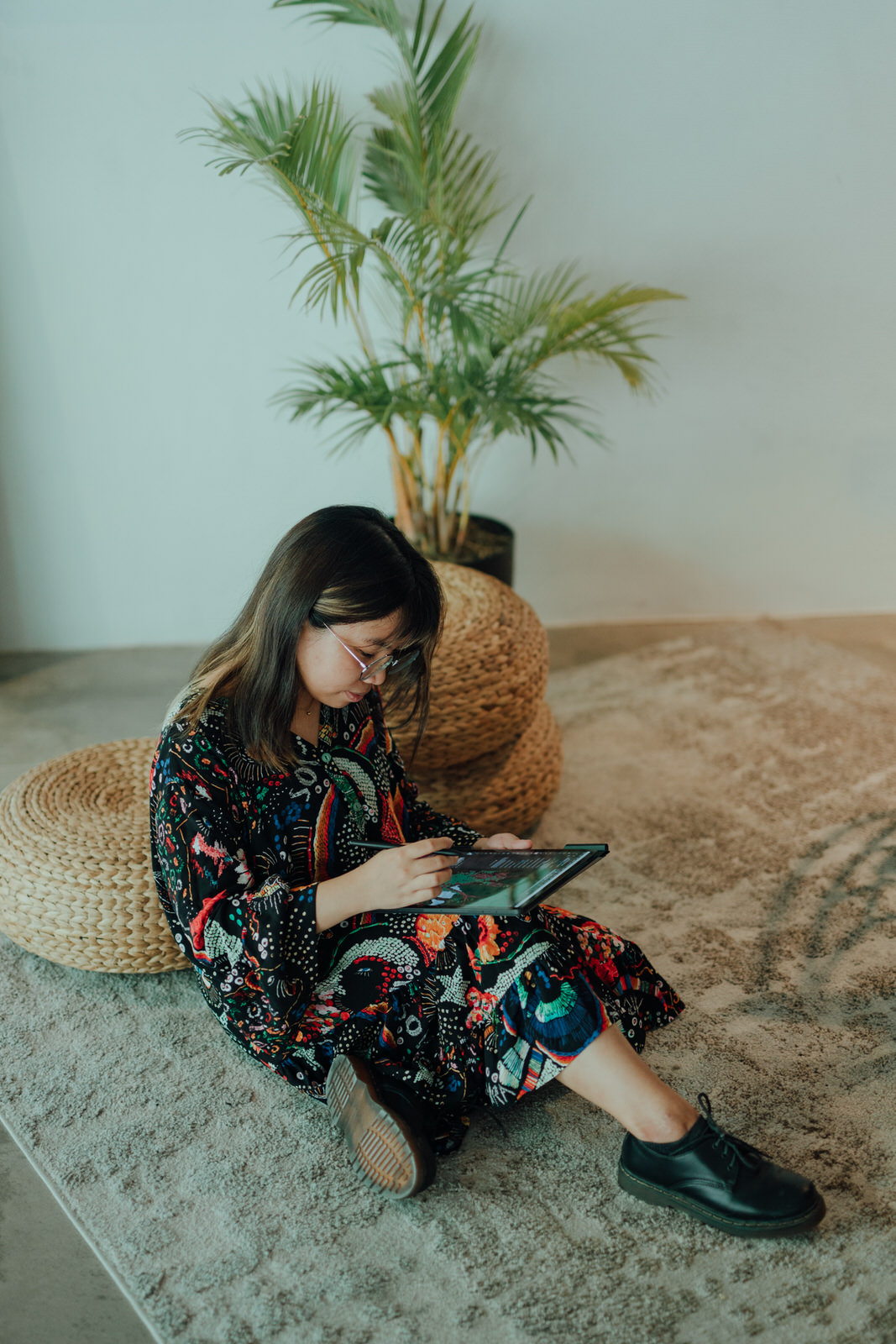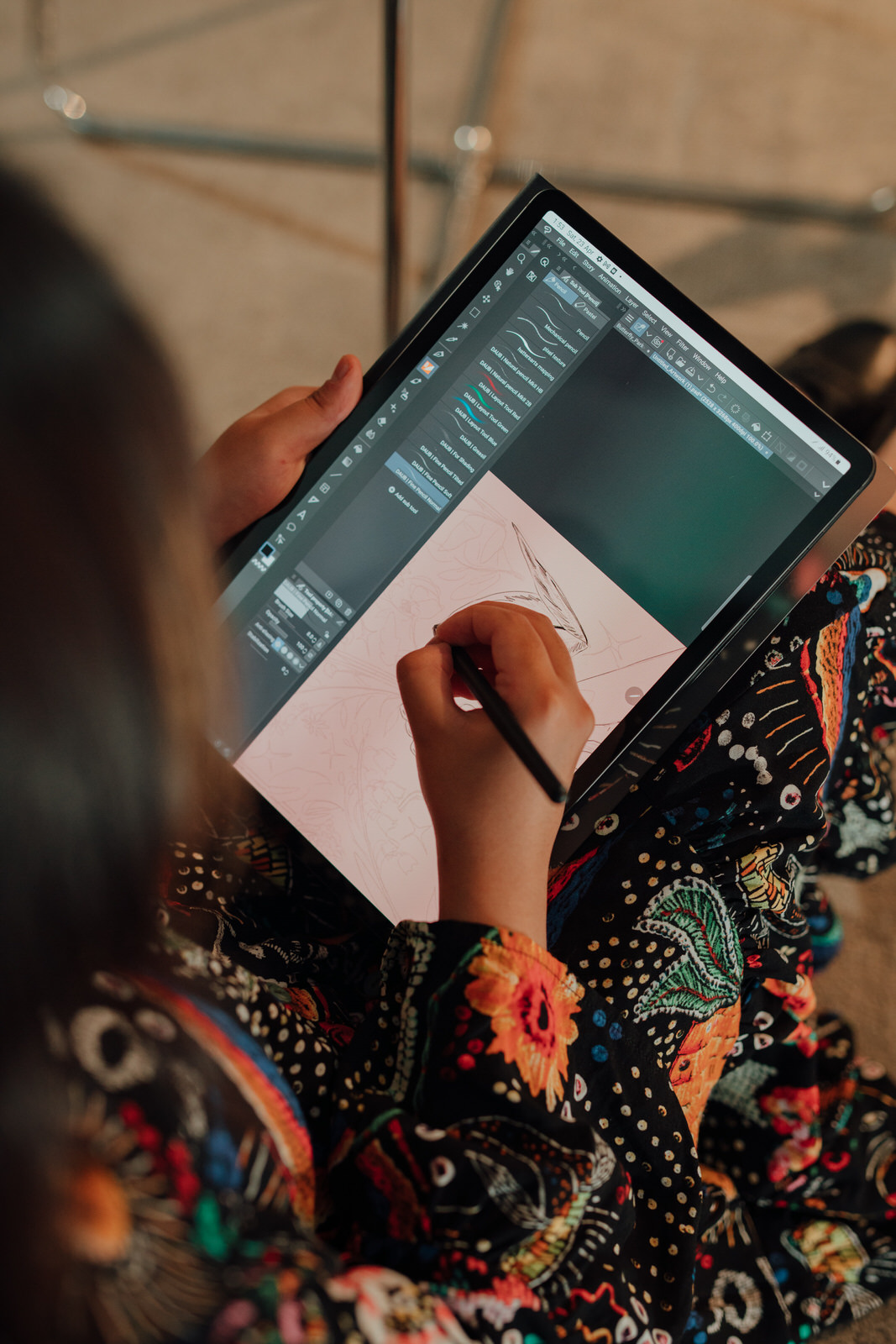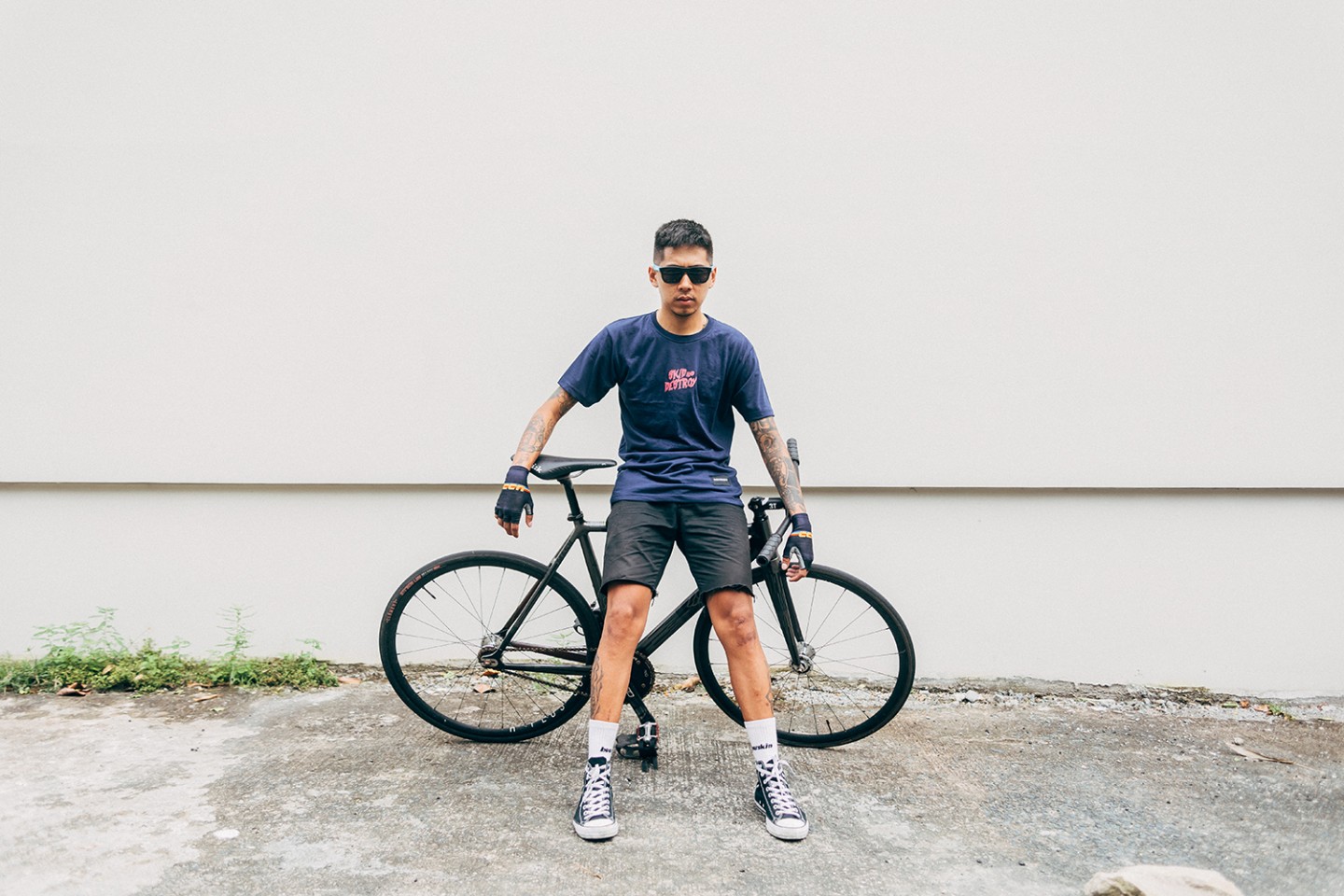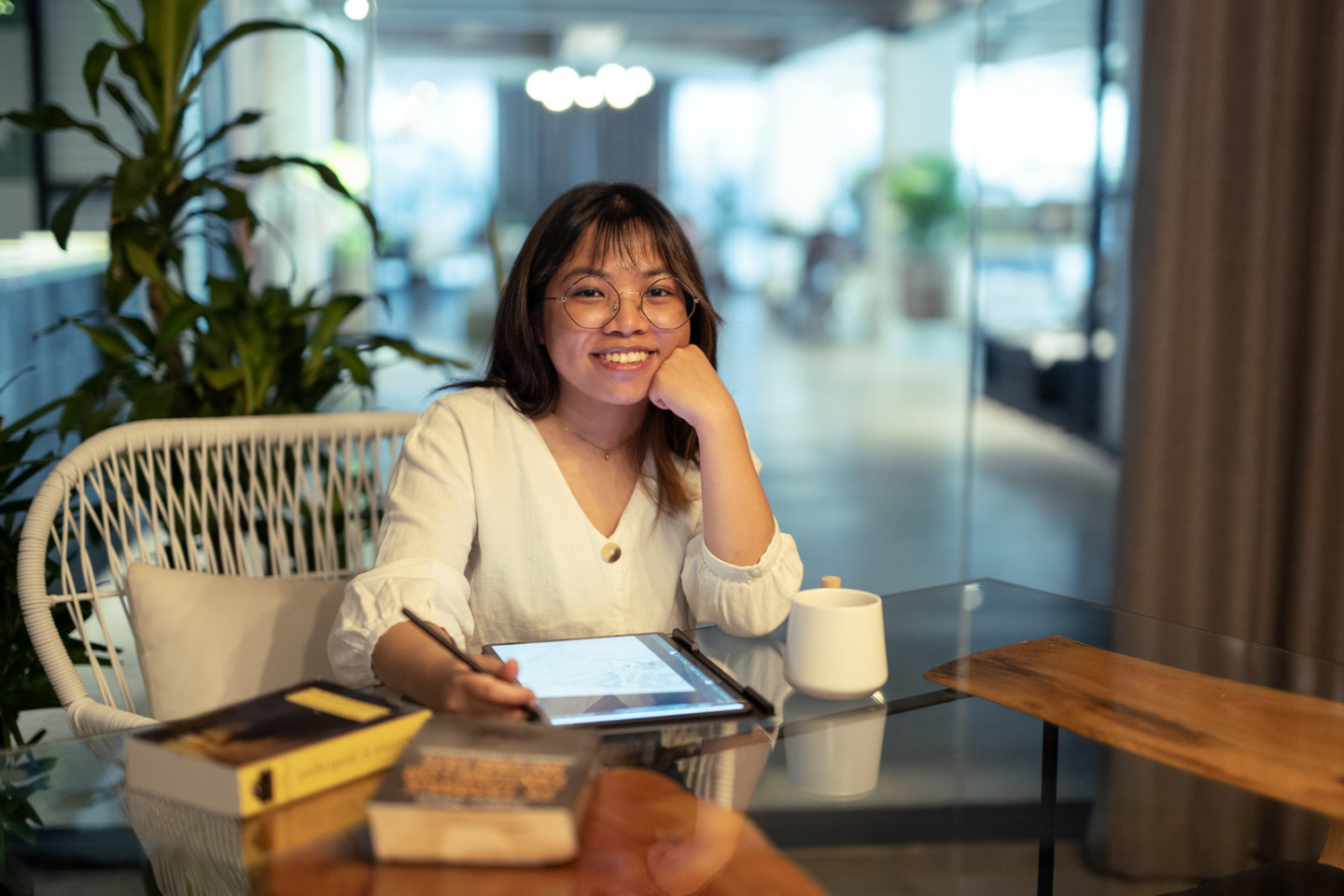
Magic and the real, earthly and ephemeral, intricate and intimate — these are just a few of the modalities that describe the work of Ivy Berces (@prinsomnia_). Magical girls in forests, hidden beauty of the ether of the world, and a playful, yet proud veneer, of popping colors and extremely-detail laden work allowed Ivy to fully express herself, magika regalia presiding, both in social media platforms and an even more direct and communal presence on Patreon.
We got to speak with Ivy regarding her time in the industry, what it’s like still maneuvering through the landscape of being a fresh artist, working freelance while still studying, and crafting a meticulous style with roots in the pseudo-punk that is magical realism in the arts.
Through our talk, we crossed many topics, from the light influences that affected her in her formative years, to her road leading to digital art, learning, the newer generation of artists, and how the Samsung Galaxy Tab S8+ 5G helps her in her craft.
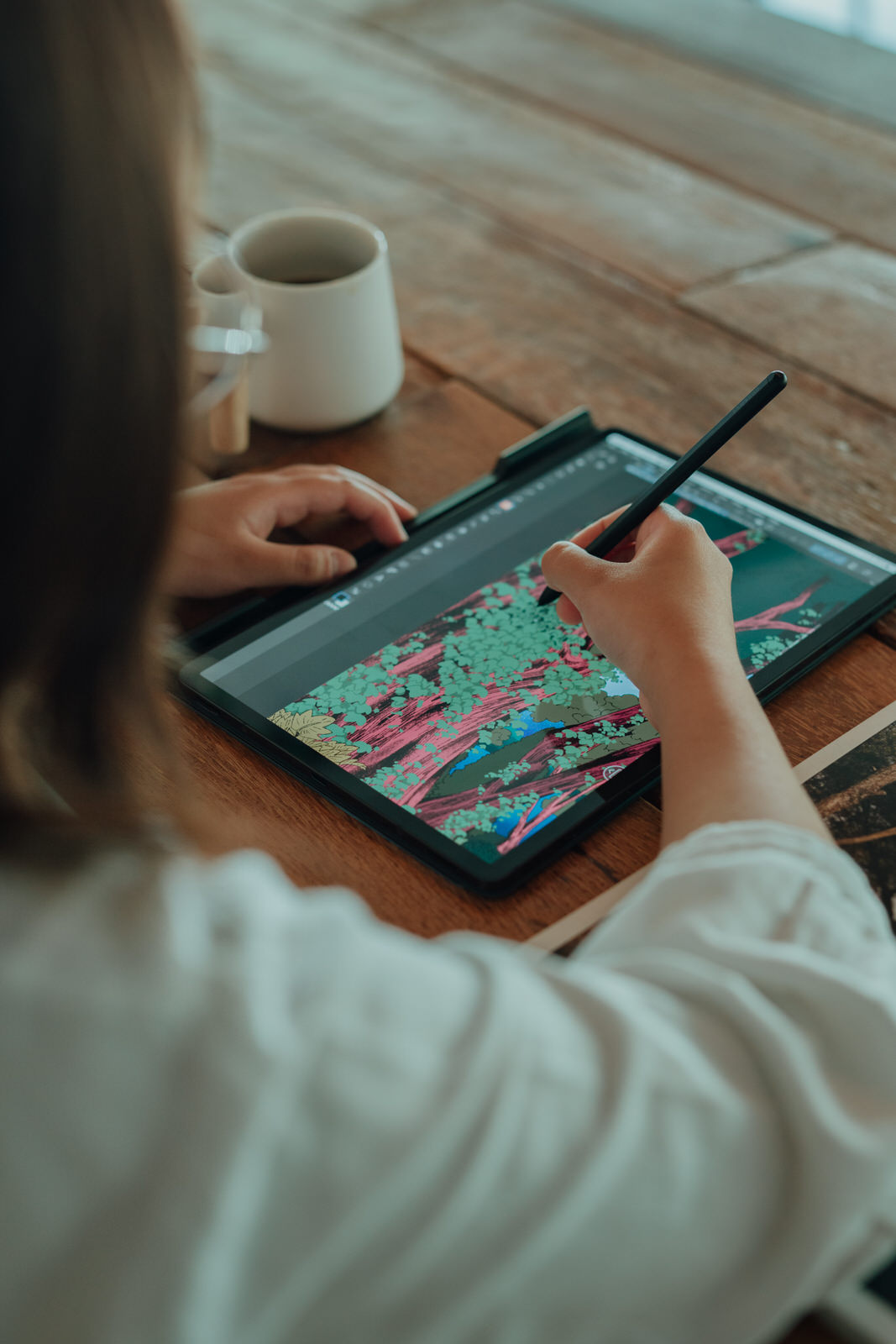
Can you tell us more about yourself?
Being an artist came to me a little bit later in life, because it was my twin sister that brought me into the world of drawing. She was the one that introduced me to drawing. It was only a little bit later—because I was a student journalist for a while—that I gained some brief experience in editorial art which allowed me to learn some design.
I first came to College of Saint Benilde as an MMA (Multimedia Arts) student, but it was only when I shifted to an Animation degree that things started clicking in. A few years later, here I am in my junior year, and things are going great for my portfolio! [laughs]
Funnily enough, one of my favorite gigs so far has been working on this sticker book with Summit Books (‘The Adulting Sticker Book’) which gave me and my fellow artists the opportunity to do whatever we wanted on our assigned pages. When it came out, it was so amazing and surreal to see it all come together, side-by-side with some of my favorite artists like Abbey Sy (@abbeysy) and Robert A. Alejandro (@robert_alejandro).
As an artist, what do you think of the landscape now when it comes to art and self-expression? How has it evolved?
As an illustrator/digital artist, I’ve seen how the landscape has evolved to welcome both traditional and digital art through the years. Gone are the days that artists purely use traditional tools. I’ve seen more and more artists try their hand at digital art, including myself.
What’s great is that there are tools like the Samsung Galaxy Tab S8+ 5G which has made my creative life so much more convenient. I could really see that it is made for a creative–like me–in mind with how easy I was able to integrate it in balancing school and work–and everything in between. The Galaxy Tab S8+ 5G S pen, screen size, and resolution, Notes app, and more made it such a breeze.
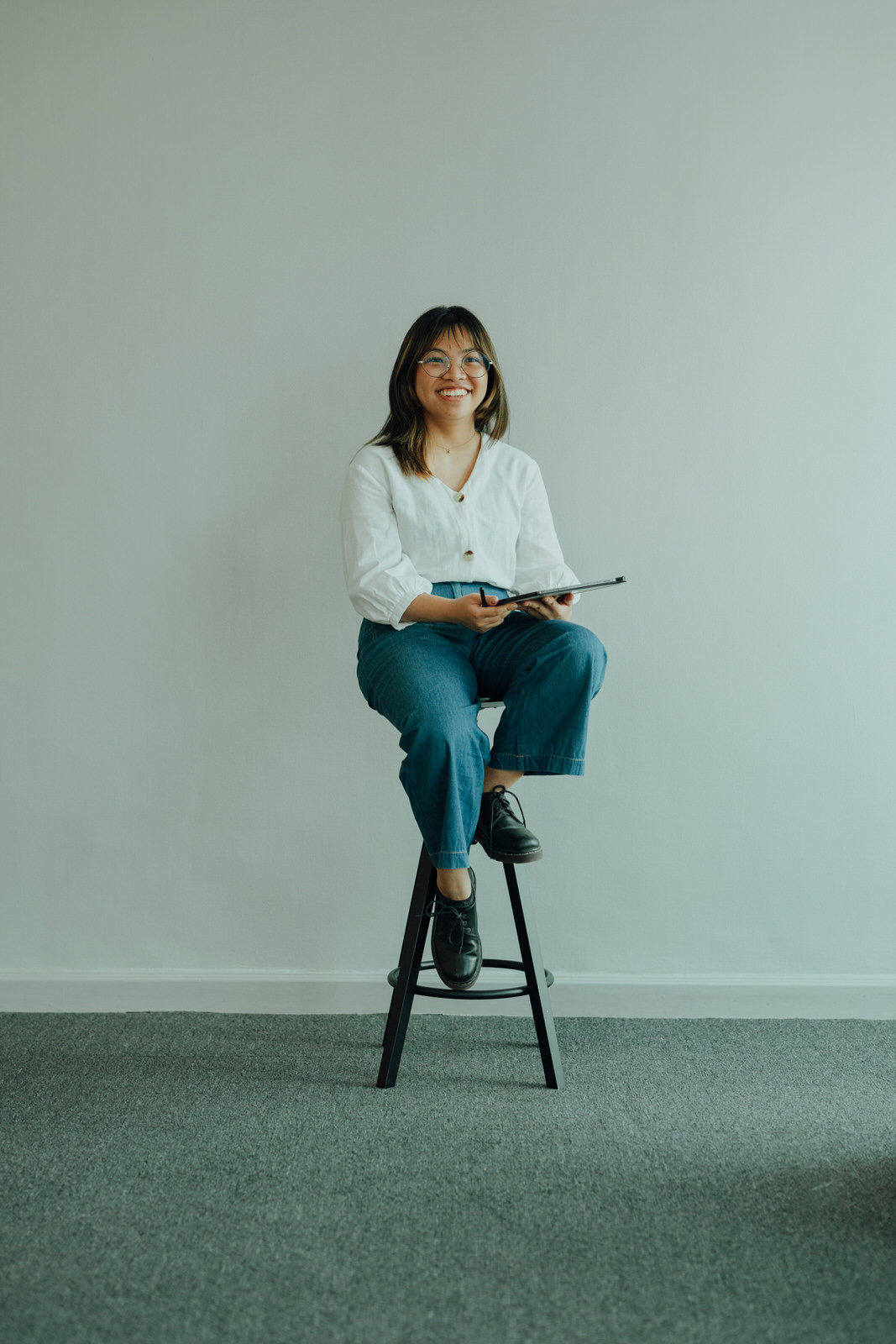
Photographer — Zaldine Alvaro / Location — The Astbury
You mentioned that the Samsung Galaxy Tab S8+ was designed with creatives in mind, do you feel as if these features affected your process greatly?
As an artist, you use what you can. And while your creative voice is the highest priority, equally as emphasized is how and in what ways you can propagate that voice. Aside from being able to use the Galaxy Tab S8+ 5G for my work, I genuinely feel comfortable that I get to use it for other things, be it leisure, simple note-keeping, or even just contacting friends and family — all that and being able to doodle on the go has seriously made it a must-have, if that makes sense.
If I had to choose three things that really helped me with my art, it’s the portability, the color-popping screen fidelity, the smooth interfacing—from touch to S pen—and overall ease of use that I get from this tablet. I used to think that the experiences on digital tablets were all kind of the same, but that’s not really the case; not compared to this tablet, especially.
What is your art trying to say the most?
Sometimes, you must look closer—even into the mundane details. Often, and especially for my art, the details really are in the tiniest of places. What you overlook and take for granted hold a hidden magic that’s just waiting to be tapped into.
I don’t aim for the ‘real,’ in whatever sense of that word. I look for the magical real. My biggest hope is that it makes people look more closely at art, especially the small and fine details.
How do you keep your relationship with the devices available, or tools of your trade?
There are two things at play here: the medium and the artist.
The role of the medium is serving as the vessel for the message that’s being conveyed and how one would try to view it. The artist’s role is all about spending time with the art, mulling over the details, and amplifying that message into something of its own.
Did you initially start on pen or on paper? What are your thoughts on starting out with digital as opposed to the traditional route?
I started with pen and paper and I definitely remember having the struggle where I repeat certain parts often enough that it would create damage. Still, that feel of pen going on paper is unmatched.
In my transition to digital art, I had a hard time finding that synchronicity in the sensation of that ‘graphite feeling.’ After testing out so many different brushes, I can confidently say that there are only little brushes out there that replicate the feel of a pen and paper sensation accurately.
For one, screen size and seamlessness with the stylus was something I always looked for—the ‘real-life’ aspect for pen and paper always made it easier to absorb what was happening in front of me, but a digital display could feel claustrophobic. Thankfully, I never felt this way with the Samsung Galaxy Tab S8+ 5G. Clip Studio Pro with an S pen has been a blast.
Honing your craft is never easy, but with digital art, the journey is at least a bit kinder. For a lot of budding artists, how and with what they get started can be a make-or-break situation. My advice is that they get started looking for the right device or tablet for them, straight away.
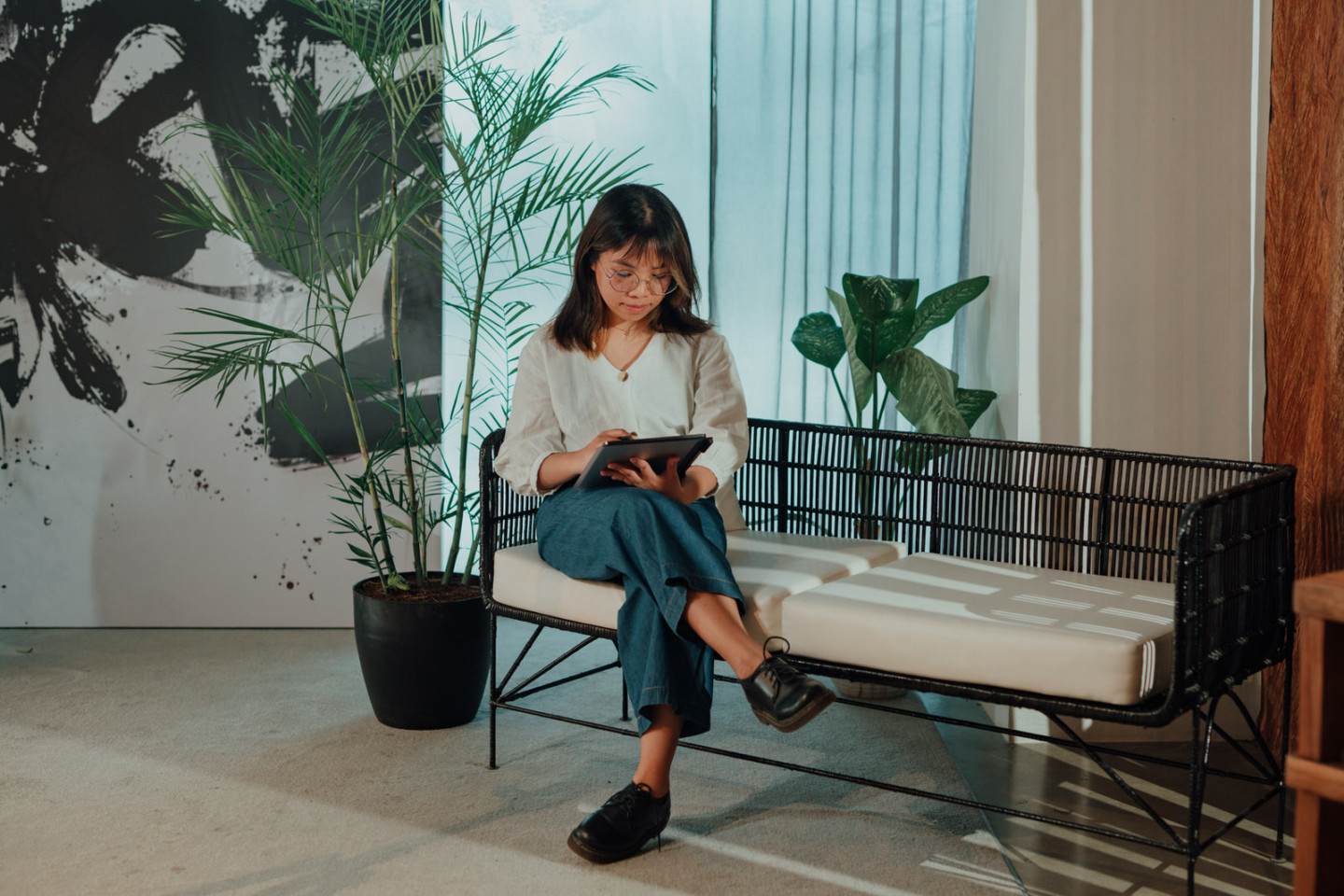
You mentioned that the feel of a pen on paper is unmatched, but what would you say is the advantage of digital art?
That’s right! There really is nothing that could compare to the classic feeling of pen on paper and how satisfying it is—especially for someone who started traditional, like me. But I think that shouldn’t stop anyone from thinking that digital art is a total game changer, especially since I use the Samsung Galaxy Tab S8+ 5G which allowed me to transition from traditional to digital so easily. Once I got a grip on its intricacies and features, working on it feels so natural and seamless—and those qualities are really important to me as an artist.
One of the reasons why it feels so natural and seamless is how the S pen gives you a very realistic pen-on-paper experience–making it feel as though I never transitioned at all!
What steps for you are the most important for your process? Any favorites?
I plan before I try out anything by sketching out ideas on my Galaxy Tab S8+ 5G–and getting to new ideas with composition. Afterwards, which I consider another crucial part of the process, is doing the line art where the brush is most important to me. If the line art doesn’t work, then it would be hard for me to finish.
Something I’ve also learned over the years is that you must be really good at improvising and reworking things on the fly if need be. Pre- and post-work, my Samsung Notes app would go from super clean to being super cluttered! [laughs]
One of my absolute favorite things for making art is that if it’s animated, I love doing the animations on my PC. If it’s static work, it’s playing with colors which is easier to do when you can have a reference open side-by-side with your app on your tablet. In my case, I use the Galaxy Tab S8+ 5G.

What would you say are your chief animation or illustration pegs and inspirations?
One of the things that I grew up with are Studio Ghibli films. I enjoyed its fantasy element and its ability to effortlessly embody the fantastical elements without having to explain itself, unashamedly.
I take inspiration from Tarot cards, too because of its occult nature. Astrology, mythology—especially Philippine mythology—and the esoteric. Something about how large, intricate, and complex these conceptions have been, especially with its deliberate and delicate progression through the passage of time. And of course, there’s also the books I read, both the cover art and the text itself.
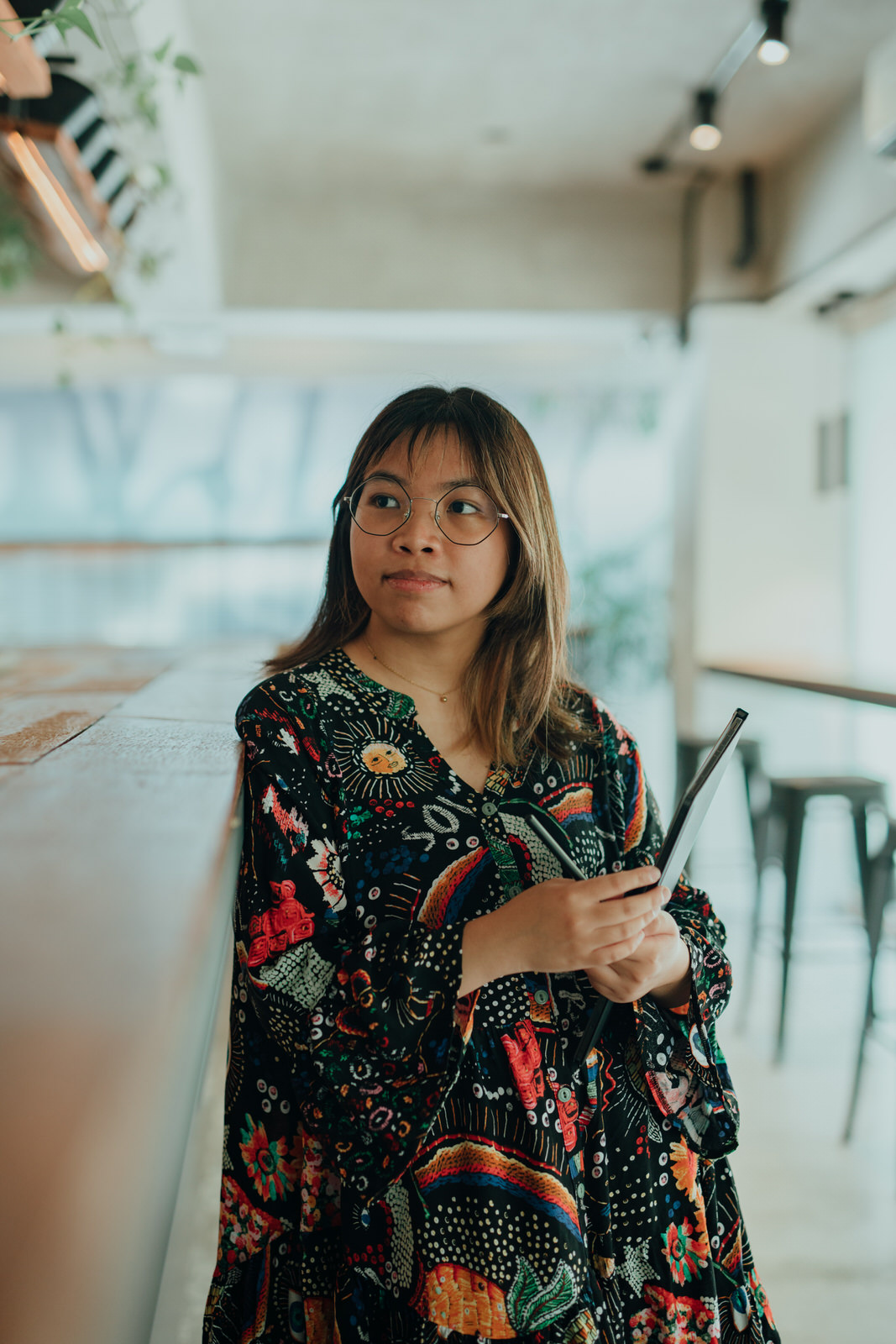
It’s fair to say that there’s an intended and stylized ethereal quality to the art that you produce. What would you say your relationship is with magical realism?
I’m an open-minded person, and I like the weird stuff. There is an intricacy with that kind of aesthetic that appeals to me: the magical and ethereal. It’s something I replicate, or try to, in my work because more than its style just being infectious and beautiful, it’s also a meditative process.
I’ve been told that I’m a really “chill” person. I’ve often thought that this was one of the reasons I’m not so out there—as in extroverted and bold. But after honing my art, I think I’ve found my own boldness, in a way. I suppose this has led to me embracing this style and having a certain approach to colors: brave and unhiding.
Even something like vent art, which even I keep to myself, has this element of trying to be unabashedly myself, you know? I hold some parts of this proudly in secret because I know that I don’t have to share it. There’s magic even in the secrecy, see?
What would you say are unconventional skills that helped you craft this meticulous look for the aesthetic your art is known for?
I’m a plant lover—if you can’t tell with a lot of my work. Growing up, tending around the garden and helping my mom when we were just spending time with plants helped me gain interest and develop an understanding with how they ‘looked,’ way before I even started learning to draw. In a way, it gave me an unexpected advantage. Eventually, I’d take up botany on the side after entering college, which rounded out my knowledge and appreciation of plants!
But while my interest in plants was there even pre-pandemic, it was the lockdowns that really accelerated this hidden love—turned affinity—for plant care. I used to go out all the time, but since being shut in, my need for having plants around skyrocketed.

Artists find a great chunk of their work and scout it for that ”thing” they want to point at and go, “That’s it! That’s my thing!” What was your ‘Eureka’ experience like, then coming on to develop and bloom the style into what it is today?
There was a time when I started to make small animations for gifs—just small little scenes, moving bits and pieces here and there. I hardly do it anymore, but making those, as close as to what I can imagine, is something I could call a ‘Eureka’ moment for myself. It’s where people found me first.
And as for where things started to branch out, and where my real love for fine, intricate, and incredibly minute details came in was with reading about Tarot cards. I just loved looking at them, you know? All that symbolism, all the unique design, from swooping composition to the minutia—esoteric art at its finest.
It was then that I started taking inspirations from the unexpected places: murals, paintings, church frescoes, mosaics, historical sites, things like that. Chances are if it were an indoor space with decor, or outdoors with public art, it has influenced me even without me realizing.
What would you say to artists, whether seasoned or budding, who are looking to capture that ‘thing’ they’re good at?
I would tell them to think about what kind of art they want to see in the world. While you could consider it saturated, there’s still room for something new everyday! Of course, it’s easier said than done, to tell them to be drawn to something, which is why I would rather tell them to make the art that they want to see in the world. For me, this was what ultimately led me to honing in on complex art with a lot of plants, haha!
As artists are constantly on the lookout for inspirations and ideas come in the most random ways–and moments, they need a trusty medium of trade they can bring along with them to capture these creative juices right at the moment. The Samsung Galaxy Tab S8+ is ideal for aspiring and professional artists who do not want to carry bulky equipment or gadgets to do so. It allows creatives to do work anytime and anywhere–an especially important feature given our current landscape.
It comes with Clip Studio Paint and an ultra-wide display with a 12.4-inch body offering more screen to be seen than borders. Designs become more lifelike and bright because of the Super AMOLED screen’s wide color range. Artists can also draw comfortably with Galaxy Tab S8+ S Pen.
The Galaxy Tab S8 Series is available at the Samsung Online Store, all Samsung Experience Stores, Samsung authorized dealers, Lazada, Shopee, Abenson.com, and MemoXpress Online at the following prices:
- Galaxy Tab S8 Ultra 5G: PHP 77,990 SRP (12GB RAM + 256 GB)
- Galaxy Tab S8+ 5G: PHP 63,990 SRP (8GB RAM + 256GB)
- Galaxy Tab S8 5G: PHP 49,990 (8GB RAM + 256GB)
- Galaxy Tab S8 Wi-Fi: PHP 41,990 SRP (8GB RAM + 256GB)
The Galaxy Tab S8 Ultra 5G and S8+ 5G are available in Graphite, while the Galaxy Tab S8 5G and Wi-Fi variants come in Silver and Pink Gold.


